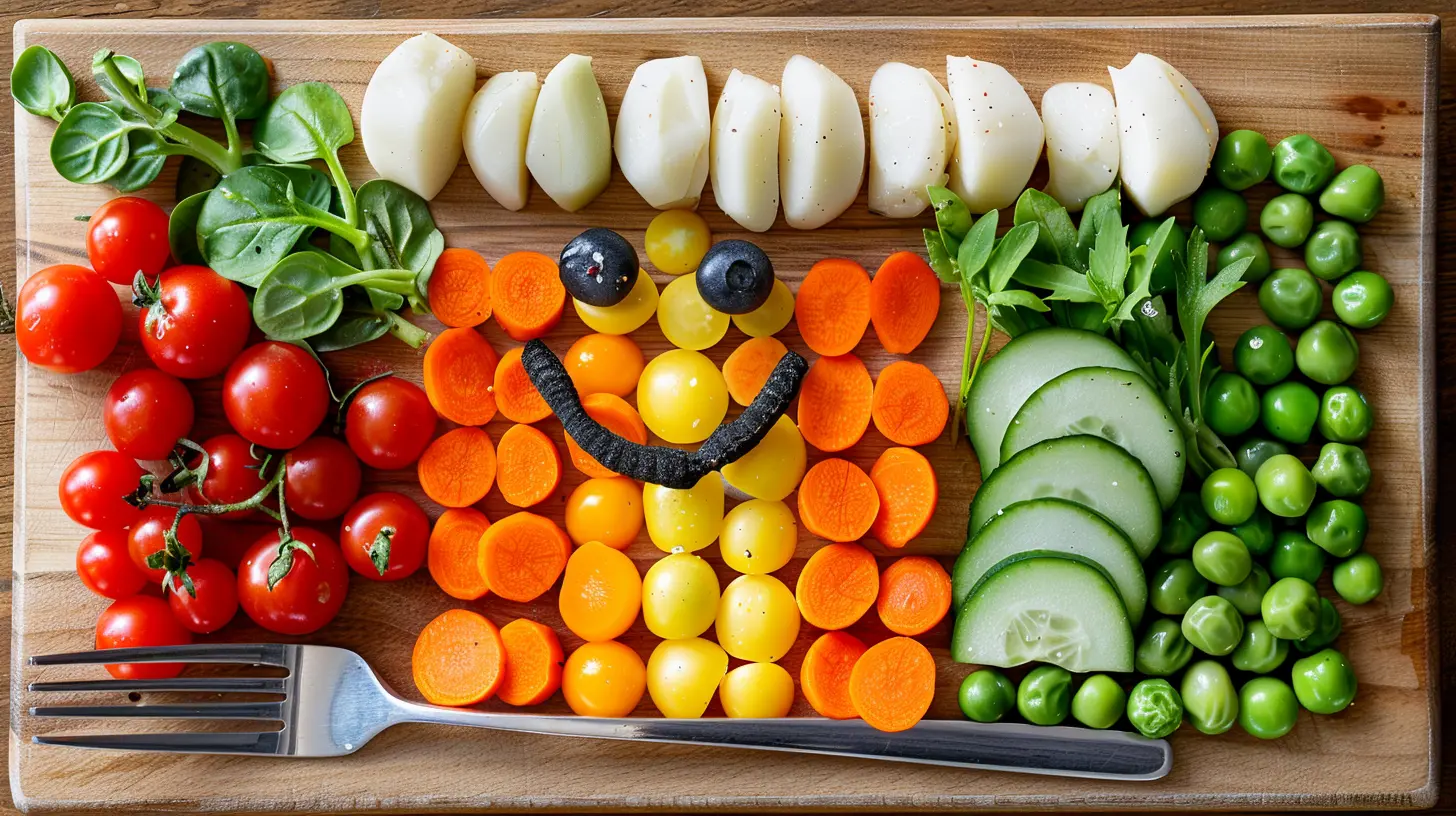Parenting a Picky Eater: Creative Meal Solutions to Make Everyone Happy
24 September 2025
Parenting a picky eater can feel like you're constantly auditioning as a short-order cook on a reality show—only the judge is about three feet tall, moody, and mysteriously repelled by anything green. Sound familiar?
If mealtimes in your house are more like a battlefield than a bonding time, you’re not alone. Getting your pint-sized food critic to try new foods (or even just eat what’s on their plate) can be one of the most frustrating parts of parenting. But don’t worry—we’re here to help with real talk, relatable tips, and creative meal solutions that might just turn those frowns into forkfuls.
Let’s dive into some mealtime magic, shall we?
Why Are Kids So Picky Anyway?
First things first—let's not panic. Being picky is a totally normal phase for many kids. It's usually part of them asserting independence or reacting to unfamiliar textures and flavors. Sometimes it’s a sensory thing, sometimes it’s about control, and sometimes… well, they’re just not that into broccoli today.Kids are developing their taste buds, and believe it or not, it can take 10–15 exposures to a new food before they even consider liking it. So yeah, that one time they spit out the zucchini? Doesn't mean it's a lost cause.
Common Struggles With Picky Eaters
Before we get into solutions, let’s call out the biggest battles most parents face:- Food Refusal: The classic “nope” to anything new or different.
- Meal Monotony: Only eating chicken nuggets, mac and cheese, or peanut butter sandwiches. Every. Single. Day.
- Power Struggles at the Table: It feels like you've become a mealtime negotiator instead of a parent.
- Snacking Sabotage: They claim they’re “not hungry” for dinner but mysteriously devour snacks later.
Sound familiar? Yep, you’re definitely not the only one.
Creative Meal Solutions That Actually Work
Now for the good stuff. Here’s a toolkit of creative, realistic, tried-and-true ideas that can help you turn those mealtime struggles into success stories. Grab your apron—let’s make meals fun again.1. Make Food Fun (Seriously, It Works)
Who says food has to be boring? Presentation goes a long way with little ones. Try:- Food shapes using cookie cutters: Turn sandwiches, fruits, or even cucumbers into stars, dinosaurs, and hearts.
- Colorful plates: Add a “rainbow” of veggies with dips like hummus or yogurt.
- DIY meals: Let kids build their own tacos, pizzas, or wraps with a variety of toppings.
Think of it as edible arts and crafts—it taps into their creativity and gives them a sense of control.
2. Involve Them in the Process
Kids are way more likely to eat something they helped make. Even toddlers can:- Pick out fruits and veggies at the store.
- Wash produce.
- Stir or pour ingredients with supervision.
It may take a little longer (and get a little messier), but the payoff? So worth it. They’ll be proud of “their” dinner.
3. Use The Power of Dips and Sauces
Never underestimate a good dip. Ketchup, ranch, hummus, peanut butter, or even a homemade yogurt dip can make all the difference.Kids love to dip—it gives them control and adds flavor. Who cares if it’s broccoli or a carrot stick? If they dip it, they might just eat it.
4. Add Nutrition Sneakily (But Smartly)
Let’s face it. Sometimes they’re not going to eat spinach straight up. That’s when you get sneaky (clever, really).Here are a few stealth modes:
- Blend veggies into pasta sauce—carrots, spinach, zucchini… they’ll never know.
- Add pureed veggies to muffins, pancakes, or smoothies.
- Use mashed cauliflower in place of mashed potatoes.
You’re not tricking them (okay, maybe a little), but you’re also not battling at the dinner table.
5. Don’t Be a Short-Order Cook
It’s tempting to whip up a separate dish just to avoid the fuss. But making different meals for everyone? Exhausting. And it teaches your kid that they can always get what they want by turning up their nose.Instead:
- Offer a variety of items at each meal (at least one you know they like).
- Let them choose what they want from what's served.
- Keep calm if they don’t eat much—no pressure, no bribes.
It's about gentle exposure and creating a low-stress environment around meals.
6. Create a Mealtime Routine
Kids thrive on consistency. Set regular times for meals and snacks to avoid grazing all day. If they're not hungry at dinner, it might be because they snacked too close.Structure helps with:
- Regulating appetite.
- Building positive habits.
- Creating predictability around food.
Pro tip: Aim for 2–3 hours between meals and snacks.
7. Get Creative with Names
Would you rather eat “green beans” or “dragon wands”? Exactly.Giving foods fun, silly names can totally change how kids view them. Try:
- “X-ray Vision Carrots”
- “Ninja Broccoli Trees”
- “Rocket Fuel Smoothies”
It’s all about reframing the experience. Now it’s not “eating healthy”—it’s powering up like a superhero!
Sample Meal Ideas Even Picky Eaters Will Try
Okay, now let’s get down to real meals you can actually make and serve with confidence:Breakfast
- Banana Oat Pancakes (blend banana, oats, and egg—easy peasy)- Smoothie Bowls with hidden spinach and topped with their favorite fruits
- Egg Muffins with cheese and finely chopped veggies
Lunch
- Turkey and Cheese Roll-Ups- DIY Lunchables with crackers, cubes of cheese, fruit, and veggies
- Mini Quesadillas with beans and melted cheese
Dinner
- Build-Your-Own Tacos with a variety of toppings- Spaghetti with Blended Veggie Sauce
- Pizza Night—let them add toppings like mushrooms, peppers, or olives (bonus if they help prep!)
Snacks
- Yogurt Parfaits with berries and granola- Veggie Sticks with Hummus
- Frozen Banana “Ice Cream” (just blend frozen bananas!)
When to Worry (And When to Chill)
Most cases of picky eating are just phases. But if you notice your child is:- Losing weight or not gaining appropriately
- Showing extreme aversions (like gagging or vomiting)
- Eating fewer than five foods regularly
…then it might be time to check in with a pediatrician or a feeding specialist.
But for the most part? Breathe. You’re not failing because your kid won’t eat peas. Keep offering, stay patient, and try not to let it turn into a battle zone.
Final Thoughts: Progress Over Perfection
At the end of the day, parenting a picky eater is about playing the long game. You’re not trying to raise a gourmet chef overnight—you’re building healthy habits, a positive relationship with food, and family mealtimes that don’t end in tears (yours or theirs).Take small wins. Celebrate when they try something new. Keep it light, keep it fun, and remember—you’re doing a great job, even if dinner ends up being another round of buttered noodles.
And hey, if all else fails, there’s always smoothie night.
all images in this post were generated using AI tools
Category:
Parenting ChallengesAuthor:

Max Shaffer
Discussion
rate this article
1 comments
Lyra Sawyer
Embrace creativity—mealtime joy awaits you!
September 26, 2025 at 4:47 AM

Max Shaffer
Thank you! Embracing creativity in mealtime truly can transform the experience for both kids and parents. Happy cooking!


